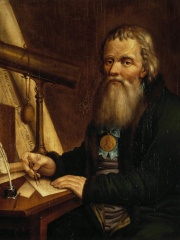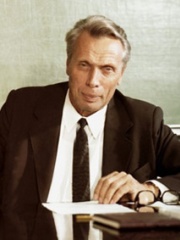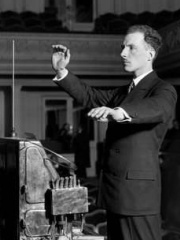
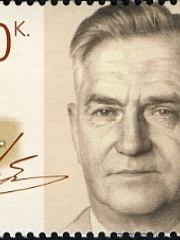
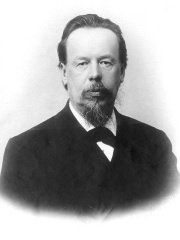
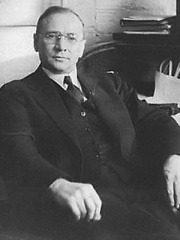
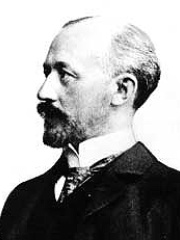

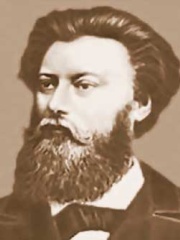

The Most Famous
INVENTORS from Russia
Top 10
The following people are considered by Pantheon to be the top 10 most legendary Russian Inventors of all time. This list of famous Russian Inventors is sorted by HPI (Historical Popularity Index), a metric that aggregates information on a biography's online popularity. Visit the rankings page to view the entire list of Russian Inventors.

1. Léon Theremin (1896 - 1993)
With an HPI of 70.06, Léon Theremin is the most famous Russian Inventor. His biography has been translated into 36 different languages on wikipedia.
Lev Sergeyevich Termen (27 August [O.S. 15 August] 1896 – 3 November 1993), better known as Leon Theremin, was a Russian inventor, most famous for his invention of the theremin, one of the first electronic musical instruments and the first to be mass-produced. He also worked on early television research. His secret listening device, "The Thing", hung for seven years in plain view in the United States ambassador's Moscow office and enabled Soviet agents to secretly eavesdrop on conversations.

2. Oleg Antonov (1906 - 1984)
With an HPI of 69.03, Oleg Antonov is the 2nd most famous Russian Inventor. His biography has been translated into 42 different languages.
Oleg Konstantinovich Antonov (7 February 1906 – 4 April 1984) was a Soviet aeroplane designer. He founded the Research and Design Bureau No. 153 (OKB-153) in Novosibirsk, which was moved to Ukraine in 1952 and is now called Antonov in his honor. Antonov designed a number of Soviet aeroplanes (such as the Antonov An-2, Antonov An-12) and numerous gliders for both civilian and military use.

3. Alexander Stepanovich Popov (1859 - 1906)
With an HPI of 68.00, Alexander Stepanovich Popov is the 3rd most famous Russian Inventor. His biography has been translated into 53 different languages.
Alexander Stepanovich Popov (sometimes spelled Popoff; Russian: Александр Степанович Попов; March 16 [O.S. March 4] 1859 – January 13 [O.S. December 31, 1905] 1906) was a Russian physicist who was one of the first people to invent a radio receiving device. Popov's work as a teacher at a Russian naval school led him to explore high-frequency electrical phenomena. On 7 May 1895, he presented a paper on a wireless lightning detector he had built that worked via using a coherer to detect radio noise from lightning strikes. This day is celebrated today in Russia as Radio Day. In a 24 March 1896 demonstration, he transmitted radio signals 250 meters between different campus buildings in St. Petersburg. His work was based on that of another physicist, Oliver Lodge, and contemporaneous with the work of Guglielmo Marconi.

4. Vladimir K. Zworykin (1888 - 1982)
With an HPI of 67.32, Vladimir K. Zworykin is the 4th most famous Russian Inventor. His biography has been translated into 39 different languages.
Vladimir Kosma Zworykin (1888/1889 – July 29, 1982) was a Russian-American inventor, engineer, and pioneer of television technology. Zworykin invented a television transmitting and receiving system employing cathode-ray tubes. He played a role in the practical development of television from the early thirties, including charge storage-type tubes, infrared image tubes and the electron microscope.
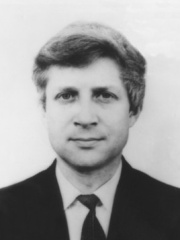
5. Nikolai Kardashev (1932 - 2019)
With an HPI of 66.29, Nikolai Kardashev is the 5th most famous Russian Inventor. His biography has been translated into 34 different languages.
Nikolai Semyonovich Kardashev (Russian: Никола́й Семёнович Кардашёв, romanized: Nikolay Semyonovich Kardashyov, IPA: [nʲɪkɐˈlaj sʲɪˈmʲɵnəvʲɪtɕ kərdɐˈʂof]; April 25, 1932 – August 3, 2019) was a Soviet and Russian astrophysicist best known for the Kardashev scale, which measures a civilization's status in technological evolution based on the amount of energy it is capable of harnessing and using. He was also the deputy director of the Astro Space Center of the Lebedev Physical Institute of the Russian Academy of Sciences.

6. Mikhail Dolivo-Dobrovolsky (1862 - 1919)
With an HPI of 64.19, Mikhail Dolivo-Dobrovolsky is the 6th most famous Russian Inventor. His biography has been translated into 22 different languages.
Mikhail Osipovich Dolivo-Dobrovolsky (Russian: Михаи́л О́сипович Доли́во-Доброво́льский; German: Michail von Dolivo-Dobrowolsky or Michail Ossipowitsch Doliwo-Dobrowolski; Polish: Michał Doliwo-Dobrowolski; 2 January [O.S. 21 December 1861] 1862 – 15 November [O.S. 3 November] 1919) was a Russian-born engineer, electrician, and inventor of Polish-Russian origins, active in the German Empire and also in Switzerland. After studying in Germany and while working in Berlin for Allgemeine Elektricitäts-Gesellschaft (AEG), he became one of the founders (the others were Nikola Tesla, Galileo Ferraris and Jonas Wenström) of polyphase electrical systems, developing the three-phase electrical generator and a three-phase electrical motor (1888) and studying star and delta connections. The triumph of the three-phase system was displayed in Europe at the International Electro-Technical Exhibition of 1891, where Dolivo-Dobrovolsky used this system to transmit electric power at the distance of 176 km with 75% efficiency. In 1891 he also created a three-phase transformer and short-circuited (squirrel-cage) induction motor. He designed the world's first three-phase hydroelectric power plant in 1891.

7. Lucien Olivier (1838 - 1883)
With an HPI of 62.68, Lucien Olivier is the 7th most famous Russian Inventor. His biography has been translated into 16 different languages.
Lucien Olivier (Russian: Люсьен Оливье, romanized: Lyusyen Olivye; 1838 – 26 November [O.S. 14 November] 1883) was a Russian chef of Belgian and French descent. He was the owner of the Hermitage Restaurant in the center of Moscow. The creation of Olivier salad is usually attributed to him.

8. Pavel Yablochkov (1847 - 1894)
With an HPI of 60.35, Pavel Yablochkov is the 8th most famous Russian Inventor. His biography has been translated into 27 different languages.
Pavel Nikolayevich Yablochkov (also transliterated as Jablochkoff; Russian: Павел Николаевич Яблочков; September 14 [O.S. September 2] 1847 – March 31 [O.S. March 19] 1894) was a Russian electrical engineer, businessman and the inventor of the Yablochkov candle, a type of electric carbon arc lamp.

9. Alexandre Alexeieff (1901 - 1982)
With an HPI of 58.77, Alexandre Alexeieff is the 9th most famous Russian Inventor. His biography has been translated into 18 different languages.
Alexandre Alexandrovitch Alexeieff (Russian: Александр Александрович Алексеев; 18 April 1901 – 9 August 1982) was a Russian-born artist, filmmaker and illustrator who lived and worked mainly in Paris. He and his second wife Claire Parker (1906–1981) are credited with inventing the pinscreen as well as the animation technique totalization. In all Alexeieff produced 6 films on the pinscreen, 41 advertising films and illustrated 41 books.
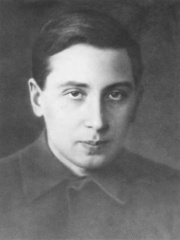
10. Oleg Losev (1903 - 1942)
With an HPI of 57.38, Oleg Losev is the 10th most famous Russian Inventor. His biography has been translated into 18 different languages.
Oleg Vladimirovich Losev (sometimes spelled Lossev or Lossew in English; Russian: Оле́г Влади́мирович Ло́сев; 10 May 1903 – 22 January 1942) was a Russian and Soviet scientist and inventor who made significant discoveries in the field of semiconductor junctions and the light emitting diode (LED). Although he was never able to complete formal education and never held a research position, Losev conducted some of the earliest research into semiconductors, publishing 43 papers and receiving 16 "author's certificates" (the Soviet version of patents) for his discoveries. He observed light emission from carborundum point-contact junctions, constructing a light-emitting diode (LED), did the first research on them, proposed the first correct theory of how they worked, and used them in practical applications such as electroluminescence. He explored negative resistance in semiconductor junctions, and was first to use them practically for amplification, building the first solid-state amplifiers, electronic oscillators, and superheterodyne radio receivers, 25 years before the invention of the transistor. However his achievements were overlooked, and languished unknown for half a century before being recognized in the late 20th and early 21st century.
People
Pantheon has 13 people classified as Russian inventors born between 1728 and 1932. Of these 13, none of them are still alive today. The most famous deceased Russian inventors include Léon Theremin, Oleg Antonov, and Alexander Stepanovich Popov.
Deceased Russian Inventors
Go to all RankingsLéon Theremin
1896 - 1993
HPI: 70.06
Oleg Antonov
1906 - 1984
HPI: 69.03
Alexander Stepanovich Popov
1859 - 1906
HPI: 68.00
Vladimir K. Zworykin
1888 - 1982
HPI: 67.32
Nikolai Kardashev
1932 - 2019
HPI: 66.29
Mikhail Dolivo-Dobrovolsky
1862 - 1919
HPI: 64.19
Lucien Olivier
1838 - 1883
HPI: 62.68
Pavel Yablochkov
1847 - 1894
HPI: 60.35
Alexandre Alexeieff
1901 - 1982
HPI: 58.77
Oleg Losev
1903 - 1942
HPI: 57.38
Ivan Kulibin
1735 - 1818
HPI: 57.31
Rostislav Alexeyev
1916 - 1980
HPI: 56.83
Overlapping Lives
Which Inventors were alive at the same time? This visualization shows the lifespans of the 12 most globally memorable Inventors since 1700.

